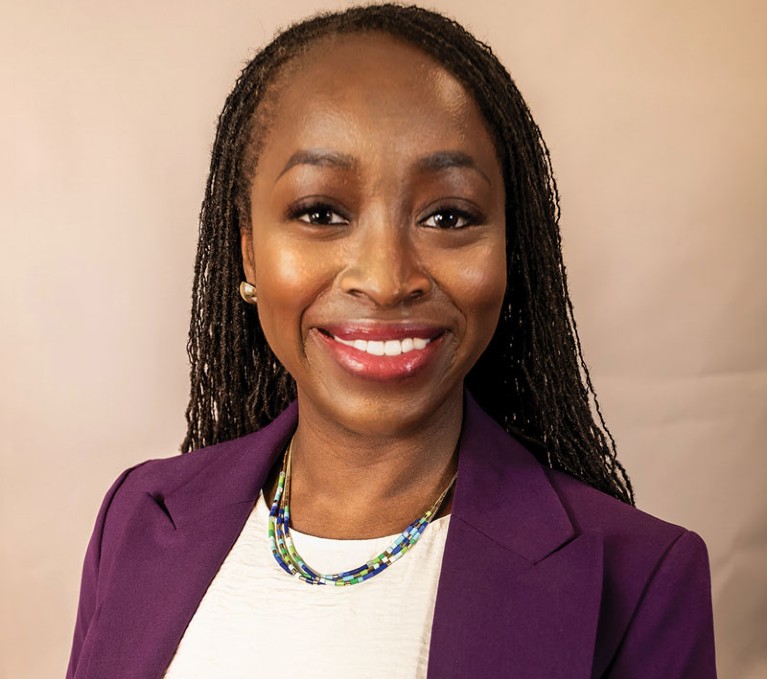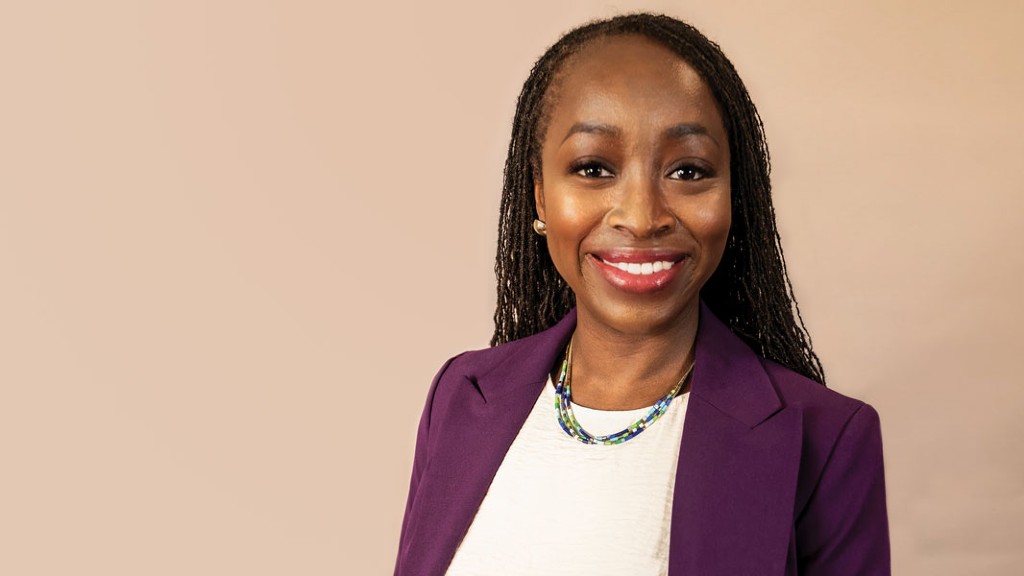
Credit: DNDi
The trip from Zanzibar to San Francisco — via Dar es Salaam, Addis Ababa and Washington, DC — is gruelling at the best of times. For Delali Attipoe, suffering from dengue fever just as she set off, it was a nightmare. Wracked by chills, fevers and nausea in aeroplanes and airport terminals around the world, her only relief came from aspirin, cold compresses and water. “It was brutal,” recalls Attipoe, a decade on. As the newly recruited Director of the Drugs for Neglected Diseases initiative (DNDi)’s North American branch, she is gearing up to promote the development of better therapies for the infection.
Dengue, a mosquito-borne viral disease, infects up to 400 million people each year. Most cases are asymptomatic or mild, but some 100 million people suffer from high fever, headache, body aches, nausea, vomiting and rash. More-severe cases require hospitalization and kill up to 40,000 people per year.
But the virus has largely been neglected by the biopharmaceutical sector. Clinicians have little access to diagnostics to reliably identify who is suffering from the disease. No specific antivirals are approved for dengue. And vaccines have yet to show sufficient protection across all dengue virus serotypes.
The bulk of this disease burden falls on low- and middle-income countries in the tropics and subtropics, but the patterns of disease spread are changing. As the world warms, the mosquitoes that carry the virus are thriving and pushing beyond borders. Dengue is increasingly popping up in the USA and Europe. The same is true of some of the other climate-sensitive neglected tropical diseases (NTDs) in DNDi’s portfolio.
Attipoe hopes to rally stakeholders against these neglected threats. “It’s only going to continue unless we start to really tackle some of these issues now,” she says.
You’ve worked on pharmaceutical manufacturing operations, market access issues and African genomics. What attracted you to DNDi?
My parents are originally from Ghana, and I’m a first-generation American who ended up in the Midwest. Because of my family background, from Western Africa, I have always been curious about opportunities and what was happening in health care in emerging markets. And one of the things that really attracted me to DNDi, and that resonated really well mission-wise, is that they are looking at end-to-end solutions. It’s one thing to discover, manufacture and develop treatments, but also you have to think about delivering drugs and getting them into the hands of patients.
I had a chance to see firsthand how DNDi did this when I visited our operations in East Africa. I had an opportunity to view the work of our phenomenal team on the ground in western Kenya and eastern Uganda to treat Kala azar [visceral leishmaniasis, a protozoan parasite that is fatal if not treated]. Seeing how the team there worked, ensuring the procurement of donated drugs and then getting these to the patients who need them — with patients sometimes walking 100 km to get to primary health-care facilities — is hard to describe in words.
This is not just innovative science, but innovative science that produces and provides treatments to patients who suffered and previously would have needed to stay for 30 days to receive care. That treatment course is now much shorter because of the work of DNDi and its partners.
I wanted to think about the totality of how I could serve those patients. The fact that DNDi is really focused on how to discover, develop and deliver treatments means that I can make the most not only of my own expertise, but also partner with phenomenal scientists at DNDi and with industry and academia to leverage their skills to find interesting targets or repurpose drugs that could be utilized towards neglected diseases.
DNDi’s portfolio now includes 13 neglected infectious diseases, with dengue joining the list in 2021. Why did DNDi add dengue?
After my own experience with dengue, I thought “What is this? How do we not know much about what to do with this?” But we are starting to see more cases of it pop up in the USA, and not just imported cases like the one that I had, but actual spread from the mosquitoes that carry the dengue virus. I think that’s really part of the untold story around neglected diseases. Diseases like dengue are only going to become more prominent if we don’t raise the alarm and do something about them now.
What are DNDi’s research priorities here?
The burden of dengue is increasing due to climate change as well as rapid urbanization and population growth, which is overwhelming the health-care systems of many countries in the tropics and subtropics. To reduce the burden of dengue, we aim to find a treatment solution to prevent progression to severe disease, which will thereby reduce hospitalization, morbidity and mortality, and enable individuals to return to work sooner.
We are doing this by forming a Dengue alliance, led by dengue-endemic countries. We are currently initially evaluating the efficacy of repurposed drugs [including antivirals] with the aim of delivering a treatment in 5 years.
Are other NTDs also spreading beyond the tropics and subtropics?
I certainly see this as a problem not just for dengue, but for other neglected diseases as well. DNDi has done significant work in the past around malaria, and we are starting to see more cases of malaria pop up in the USA. [In August, Maryland reported its first case of locally acquired malaria in more than four decades.]
Chagas disease is also a cause for concern within the USA. [More than 300,000 people have chronic Chagas disease in the USA, although they were mostly infected in Latin America, where the disease is endemic.]
DNDi has partnered with BenevolentAI and with AlphaFold to explore artificial intelligence (AI) opportunities in NTD drug discovery. Why do these pair well?
AI is a phenomenal tool in terms of its potential to help cut down on the time that drug discovery takes, and of being able to find interesting candidates that could work. This is especially true within the neglected disease space, where we don’t have as many researchers who are focused on these diseases. Our head of discovery, Charles Mowbray, and his team have been investigating and working on AI-enabled technology within our drug discovery outfit, to propel some of this work forward in partnership with various stakeholders. We are actively working to see how this can help with our R&D portfolio.
Just 10 years ago, there was hardly any early-stage research for NTDs despite their huge burden in the developing world. We are thrilled these cutting-edge AI companies have partnered with DNDi and are using their technologies for the most neglected diseases in the world. This should speed up drug development for these areas where there is an urgent medical need for new treatments now.
What is current funding situation for NTD R&D?
When you think about research as a whole, we’re in a challenging fundraising environment. Part of the challenge and opportunity here is to raise the level of awareness and education around some of these neglected disease areas. These are not necessarily diseases that are in our lexicon. More focus and attention need to be brought to the fact that we need to be able to treat and address those diseases that, because of climate change, we are all going to feel globally. They’re literally on our shores here. I want people to be aware and to understand how their dollars can help to prevent this from becoming a bigger problem in the future.
Overall funding for NTDs was down last year, to the lowest level since 2009. How has COVID impacted NTD funding?
It certainly did put a dent in it. Of course, there was a necessary need. We were all in the middle of the frying pan, and trying to figure out how best to allocate and utilize resources to solve a global issue. But when you have one global issue in hand, you still have other global issues to deal with as well. How do you therefore then allocate those resources and prioritize them in a way that doesn’t necessarily decimate another area of need? Neglected diseases are something that people need to have awareness around.
We are also dealing, especially within the USA, with pandemic fatigue.
But we want to ensure that no disease area — and especially no neglected disease — is ignored. Hopefully we can come back to a place where we’re really allocating the right level of funding, and awareness, to these other disease areas that we’ve been struggling to address for a long time now.
COVID also attracted new funding to global public health. Do you think some of this will be redirected to NTDs?
I think there is an opportunity in terms of being able to tap into those funders who weren’t necessarily thinking about global health before. There are lots of public or private funders that don’t necessarily have initiatives related to global health issues and neglected disease. But for funders with passion projects around humanitarian issues, or climate change or poverty, neglected diseases actually cover all of that. What the pandemic did do was unlock that, and we now might be able to tap into that.
Before joining DNDi, you were Chief Operating Officer of 54gene, an African genomics research company. Tell me about the opportunity there?
We built 54gene really on the basis of the fact that most of the genomics data sets that are utilized do not leverage genomic data from African populations. Right now, 80% or even more of current data sets are of European ancestry and usually male. [Less than 3% of genetic material used in pharmaceutical research is sourced from Africa, 54gene estimated]. Given that we do have diverse genetics coming from populations within Africa, we believed it was a gap that needed to be urgently addressed.
What we were doing there, and what I was working on, was really trying to build up the research infrastructure for biobanking and genomic sequencing within the African continent to support the generation of data on non-communicable disease areas such as sickle cell disease, cardiovascular diseases, neurodegenerative diseases and oncology. We started in Nigeria, because 25% of the genetic diversity of Africa is within Nigeria. And being able to access a more genetically diverse pool allows for interesting drug discovery opportunities.
We did see interesting signals, and some of the data that we were generating would definitely play well for doing discovery work. I think there’s an opportunity when thinking about neglected disease areas as well. And partnering with genomic scientists that live and work within these low- and middle-income countries could propel a lot of the work that can lead to better-targeted therapies down the road.
Drug discovery is not a one-size-fits-all process, and we need to recognize that our genetics and environment play a role.
54gene recently shut down, under financial and legal challenges. Where does that leave the African genomics research?
54gene wasn’t the only player within the space, but it was certainly a pioneer as the first major African-focused genomics company that helped drive awareness around the issues and opportunities on the continent. A lot of people have picked up the ball, and there are more researchers working in the field of genomics since 54gene arrived. The level of visibility and importance of African genomics has been raised.
My hope and desire is that the work is not going to stop just because of one company. I would love to see that work continue through other individuals and organizations.







0 Comments